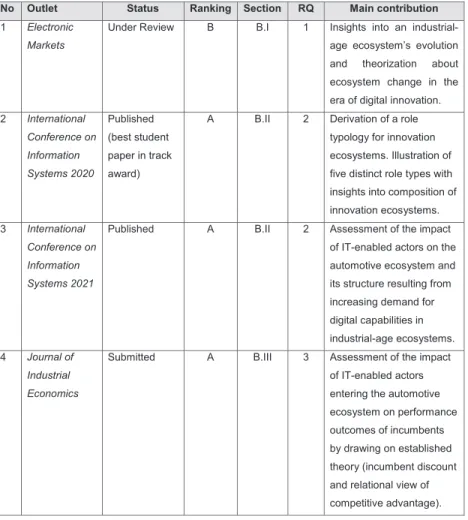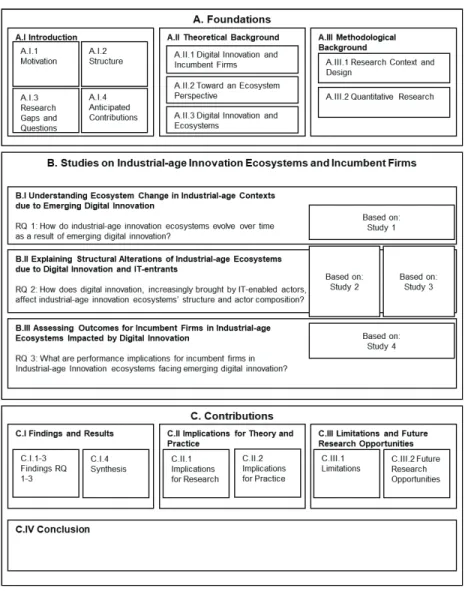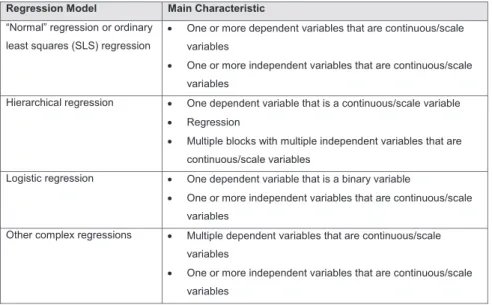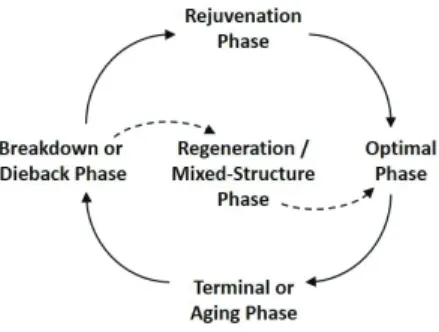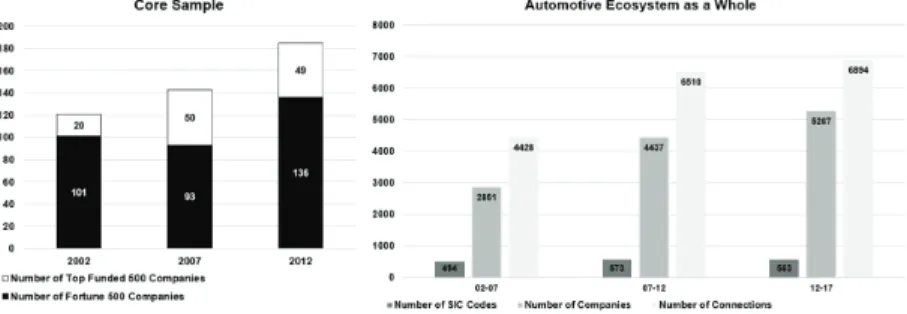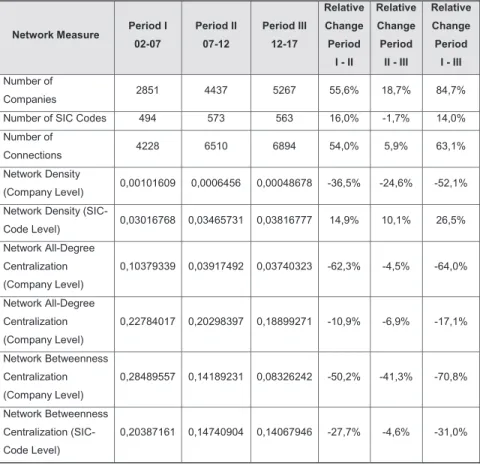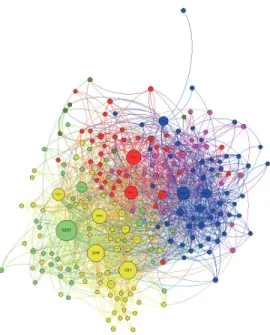First, however, the implications for industrial age ecosystems in established contexts, where the force of digital innovation collides with institutionalized industry structures, are unclear. Second, there is a lack of knowledge regarding the impact of digital innovation on existing firms in industrial age ecosystems. To address these gaps, the dissertation provides insights from four individual studies on the impact of digital innovation on industrial-age ecosystems and existing organizations.
In particular, the thesis focuses on three objectives: first, understanding the change of established ecosystems due to emerging digital innovation, second, explaining the implications of growing digital innovation by IT-supported actors for structures and actor composition, and third, assessing the outcomes for established companies within these ecosystems. The findings underscore the widespread implication of ubiquitous digital technologies and digital innovation on industrial age ecosystems in established contexts.
Foundation
Introduction
- Motivation
- Research Gaps and Research Questions
- Structure of the Thesis
- Anticipated Contributions
The increasing incorporation of digital technologies into physical products brings together market offerings, enabling combinatorial innovation (Yoo et al. 2012). This work aims to shed light on the changes in ecosystems created due to the inclusion of digital technologies (Yoo et al. 2010). Advances understanding of the transformative impact of digital innovation in industrial age contexts, accelerated by new digital ventures (Huang et al. 2017).
Benner 2007) and digital disruption (Skog et al. 2018) are still applicable in the context of innovation ecosystems of the industrial age. This work aims to offer managers guidance in times where established ecosystems meet the power of digital innovation (Yoo et al. 2012;.
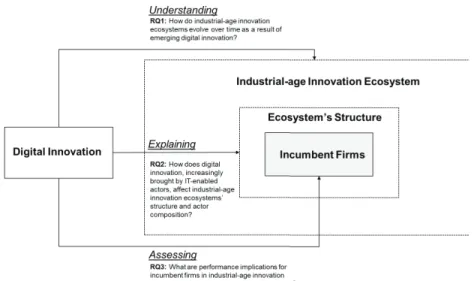
Theoretical Background
- Digital Innovation and Incumbent Firms
- Toward an Ecosystem Perspective
- Digital Innovation and Ecosystems
A second implication lies in the requirement that other firms be enabled to innovate (Yoo et al. 2012). Despite an increase in studies on the disruptive effects of digital innovation for incumbent firms recently (e.g. Bosler et al. 2021; Yoo et al. 2012), the literature agrees that digital innovation also results from radical changes for incumbents. firms (Teece 2018);.
Adapting to changing environments by proactively adopting digital innovations is a major challenge for established companies (Svahn et al. 2017). All these digital platforms are based on the widespread availability of pervasive digital technologies (Yoo et al. 2012).
Methodological Background
- Research Context and Design
- Quantitative Research
In terms of research paradigms, IS research can be divided into two different paradigms: design science and behavioral science (Hevner et al. 2004). Network analysis has its roots in social network analysis (Wasserman and Faust 1994), which deals with the relationships between actors in a network (Nooraie et al. 2020). Regression analyzes are used to obtain information about the relationship between independent variables (predictors) and the dependent variable (measure) (Mertens et al. 2017).
In addition, 🔥 is the error term as part of the equation that cannot be solved (Mertens et al. 2017). While logistic regressions are also linear models, the dependent variable is binary rather than metric (Mertens et al. 2017).

Studies on Industrial-age Innovation Ecosystems and Incumbent Firms
Understanding Ecosystem Change in Industrial-age Contexts due to
- Study 1 - Digital Innovation and Ecosystem Change in Industrial-age
- Introduction
- Theoretical Foundation
- Research Strategy
- Findings and Analysis
- Discussion of Findings
- Limitations and Future Research
- Study 2 - Toward a Typology of Ecosystem Roles in the Era of Digital
- Findings
- Implications for Research
- Implications for Managerial Practice
- Limitations and Future Research
- Study 3 - Inter-Ecosystem Migration of IT Actors in the Era of Digital
- Introduction
- Theoretical Foundation
- Hypotheses Development
- Research Strategy
- Results
- Discussion of Findings
- Implications
- Limitations and Future Research
This thesis aims to provide insight into established ecosystems that are changing due to the increasing integration of digital technologies and ubiquitous digital innovation (Yoo et al. 2012). In that first phase, physically oriented business models dominated the automotive ecosystem (Bohnsack et al. 2021). For example, in the automotive context, petrol stations are involved in providing mobility services to end customers (Athanasopoulou et al. 2016).
Most of the modern digital technologies that are transforming business environments today were developed in the time after this (Bharadwaj et al. 2013). To derive a more complete understanding of ecosystem roles in the era of digital innovation (Yoo et al. 2010), following the example of Nischak and Hanelt (2019), this study chose the automotive ecosystem for its analysis. Architecture emerges due to the incorporation of digital components into physical products (Yoo et al. 2010).
In addition, managers still face the challenge of determining the competitive position of their company within the ecosystem (Hanelt et al. 2020b). Such a perspective appears to be particularly valuable in the context of digital innovation where innovation is input, process and outcome (Yoo et al. 2010; in particular, it is unclear which actors from the multifarious IT ecosystem (Yang et al. 2019) are involved in the automotive ecosystem and what influence they ultimately achieve.
In the age of digital innovation, inter-ecosystem movement becomes an essential feature of actors, especially caused by an increased penetration of digital technologies (Yoo et al. 2012). Thus, driving digital innovation in the automotive ecosystem, which is defined as “the export of new combinations of digital and physical components to produce new products” (Yoo et al. 2010, p. 725), requires a layered modular architecture (Hylving and Schultze 2020). Therefore, the automotive ecosystem is focused to study an established ecosystem that is highly challenged due to the impact of digital innovation (Lee and Berente 2012; Svahn et al. 2017).
In particular, actors who are able to draw on critical IT capabilities such as platforms or infrastructures (Hylving and Schultze 2020), which are also applicable in new contexts (Kallinikos et al. 2013), engage in the automotive ecosystem. This promotes an increasing awareness of the mutation of the automotive ecosystem and helps distinguish between potential competitors and partners (Hanelt et al. 2021b).
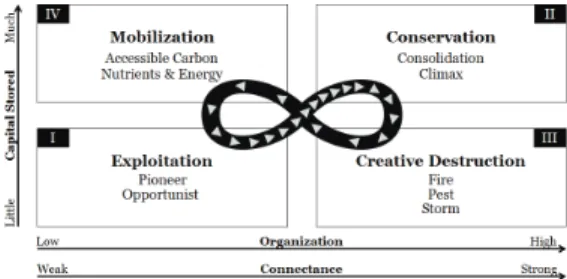
Assessing Outcomes for Incumbent Firms in Industrial-age Ecosystems
- Study 4 - The Incumbent Discount Revisited: An Empirical Investigation of
- Theoretical Background
- Hypotheses
- Research Strategy
- Results
- Discussion of Findings
- Limitations and Future Research
Incumbent firms undergo a long and challenging process of building such capabilities themselves (Svahn et al. 2017). The study provides three important implications for IS research, especially the current on digital innovation (e.g. Hund et al. 2021). First, this work highlights the importance of actor constellations in digital innovation in industrial-era contexts (Yoo et al. 2010).
The change brought about by digitization has increased the importance of new entrants to IT, especially in established contexts such as the automotive industry (Biedebach et al. 2021). As established companies try to embrace digital innovation by leveraging their internal capabilities (Svahn et al. 2017;. To be specific, before entering the automotive ecosystem, digital entrants held certain positions and roles in their IT ecosystem for home use (Biedebach et al. 2021).
These IT participants can source or develop innovation by exploiting their digital opportunities (Huber et al. 2017;. A low degree, on the other hand, suggests that an actor is far from the center (Basole et al. 2015). This finding is not trivial considering that digital ventures or startups are prominent in the discourse around digital innovation (Huang et al. 2017).
As a result, an established innovation ecosystem has new chances to increase its resilience (Yoo et al. 2010;. The demand for their digital capabilities in the automotive ecosystem has enabled them to establish digital infrastructure and essential platforms control (Gao and Iyer 2006; Huber et al. 2017).By forming joint partnerships with well-connected players, performance outcomes can be improved (Bohnsack et al. 2021).
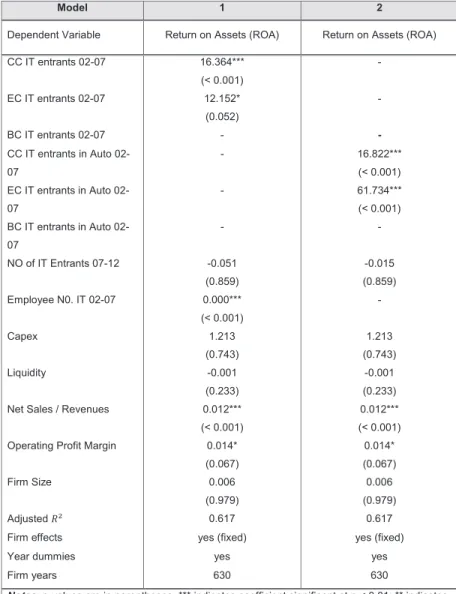
Contributions
Findings and Results
- Findings Regarding Ecosystem Change in Industrial-age Contexts due to Digital
- Findings Regarding the Intertwining of Digital Innovation and Industrial-age
- Findings Regarding Outcomes for Incumbent Firms in Industrial-age Innovation
- Synthesis: A Multi-Level Perspective on Digital Innovation impacting Innovation
The past period showed a clear sign of ecosystem change with regard to the merging of physical and digital product components (Yoo et al. 2012). The ecosystem change findings indicate a profound structural change in the automotive ecosystem over a 16-year period, which can be associated with the emergence of digital technologies and ubiquitous digital innovation (Hund et al. 2021; these findings in particular underline the widespread effect of distributed innovation, spurred by digital technologies, as a feature of digital innovation (Yoo et al. 2012).
This finding suggests that firms in the automotive context are highly dependent on digital infrastructure and providers that can leverage digital infrastructure, thus supporting incumbent firms to adopt digital innovation (Svahn et al. 2017). This finding highlights the characteristic of distributed innovation that increasingly shifts the location of innovation activities (Yoo et al. 2012). Also in this case, the automotive ecosystem served as a research context, representing an established ecosystem from industrial age contexts facing serious challenges related to digital innovation (Nischak and Hanelt 2019, Bohnsack et al. 2021).
As incumbent firms are forced to engage in digital innovation (Svahn et al. 2017), they begin to collaborate with IT-enabled actors, ultimately changing the ecosystem's structure and actor composition. Incumbents can make use of digital capabilities provided by IT-enabled actors to achieve a layered modular architecture (Yoo et al. 2012; Hylving and Schultze 2020). Gaining insights into innovation ecosystems of the industrial age, where established firms are under severe pressure to embrace digital innovation (Svahn et al. 2017), the findings of this thesis contribute to an understanding of how established innovation ecosystems change due to pervasive digital innovation.
Valkokari et al. 2017), in industrial age innovation ecosystems different actors may be responsible for orchestration (Dedehayir et al. 2022). As incumbents increasingly rely on digital capabilities and external knowledge to adopt digital innovation (Svahn et al. 2017), intensively. Instead of subverting established contexts (Skog et al. 2018), IT-enabled actors enable innovation ecosystems to flourish, revitalized by the force of digital innovation (Nischak and Hanelt 2019).
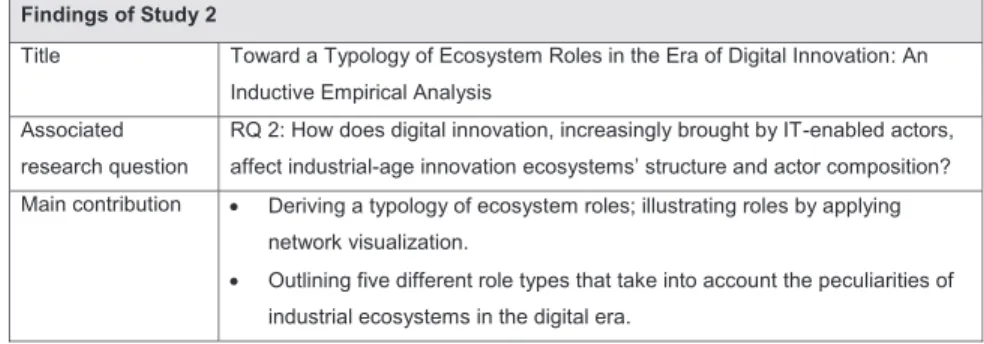
Implications for Theory and Practice
- Implications for Research
- Implications for Practice
This finding is confirmed by recent work on the systematic and efficient entry of recognized large technology into established contexts (Ozalp et al. 2022). This finding is important as it contributes to the current debate on the challenges of incumbent firms in an industrial age environment (Svahn et al. 2017;. This study extends established research methods and designs for ecosystem research (Cobben et al. 2022).
These findings are particularly valuable, first, as they emphasize how multiple ecosystems are involved in driving digital innovation (Selander et al. 2013). Third, the micro-level perspective on established firms in established innovation ecosystems (see Study 4) provides additional important implications for IS research, particularly concerned with digital innovation (e.g., Hund et al. 2021). Adopting a micro-level perspective on the performance outcomes of incumbents complements research on the challenges faced by incumbents in established ecosystems attempting to embrace digital innovation (Svahn et al.
The findings provide IS research on digital innovation with an expanded perspective (Yoo et al. 2012; Taking an empirical approach, this study addresses calls for more empirical ecosystem research (Cobben et al. 2022) through the impact of IT-enabled delineate actors.First, in relation to previous research on traditional ecosystems, this thesis offers a valuable extension by determining how digital innovation is enabled by the incorporation of digital technologies (Hund et al. 2021;.
This thesis contributes to the knowledge about ecosystems generated by studies in strategic management (Jacobides et al. 2018; Iansiti and Levien 2004) by connecting the valuable insights with digital innovation research (Yoo et al. 2012; Hund et al. .2021) and underlines the important role digital technologies play driving digital innovation in ecosystems.
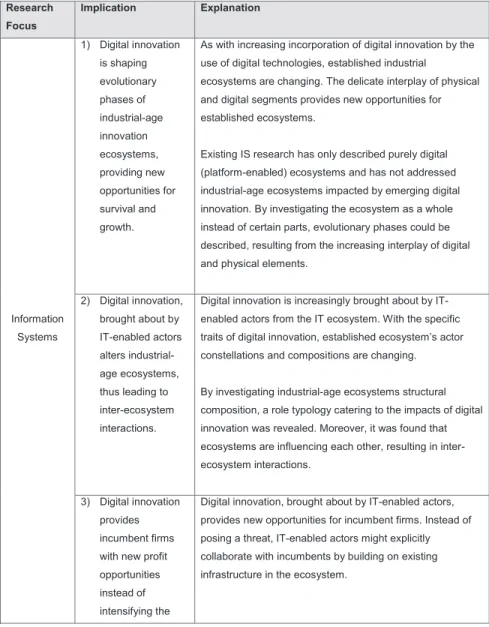
Limitations and Future Research Opportunities
- Limitations
- Future Research Opportunities
Conclusion
